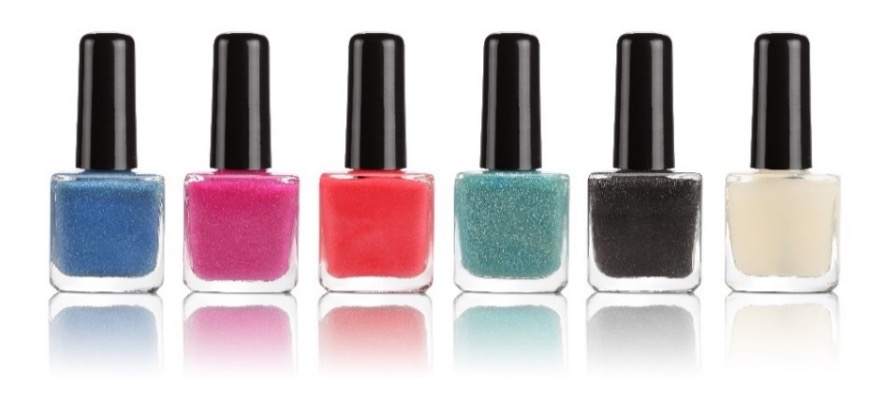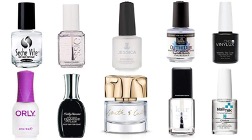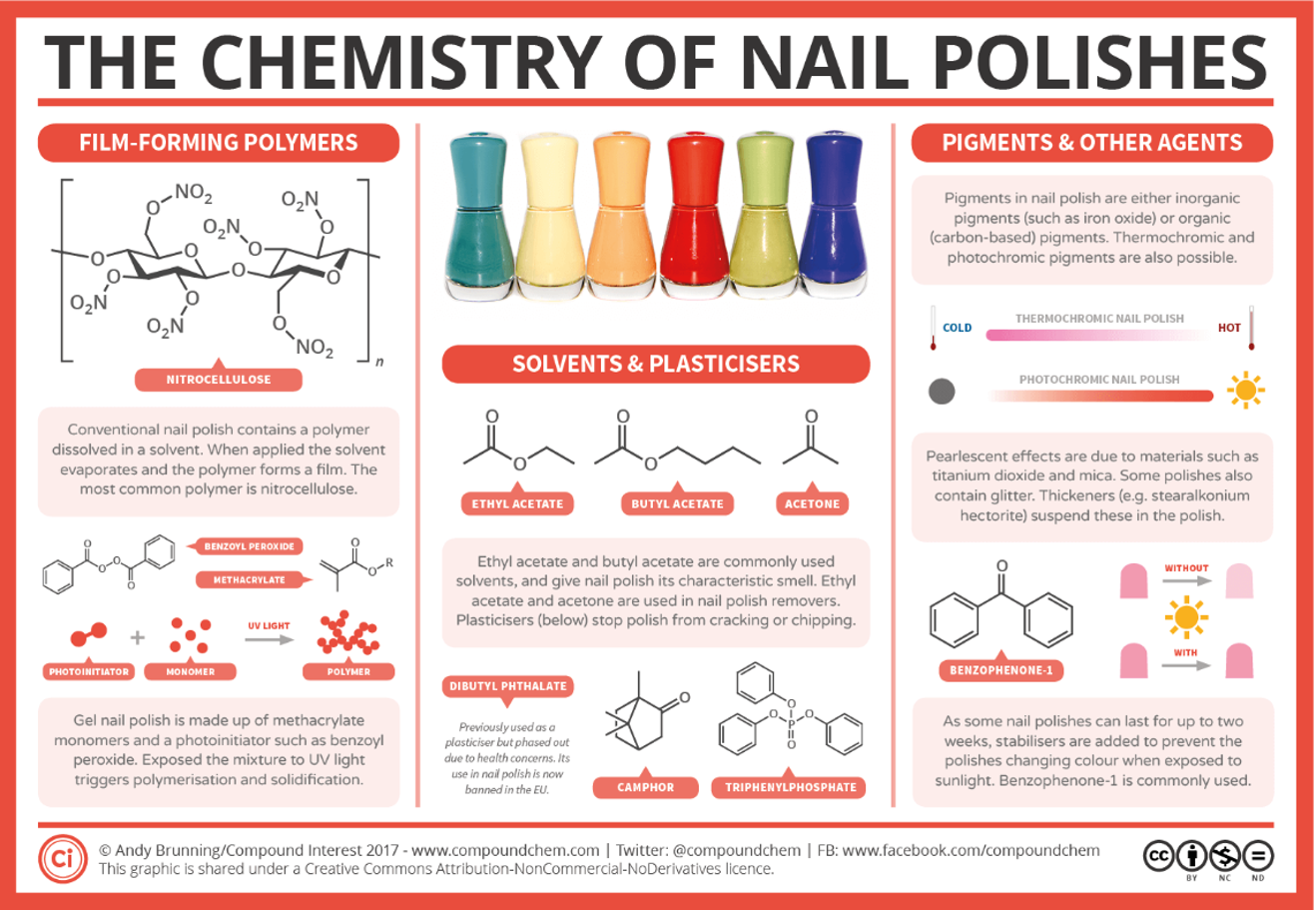The words manicure and pedicure derive from the following Latin words
‘Manus’ meaning ‘hand’
‘Pedis’ meaning ‘foot’
‘Cura’ meaning ‘care’
Your nail grows from the matrix, where the cells are dividing, as they move up towards the surface of the nail, and just like our skin and hair, they harden and die, becoming the nail plate. The nail plate grows towards the end of the finger, and the free edge is the portion you file into a shape.
The cells of the nail plate and nail bed are produced at the matrix. This is the only living reproducing part of the nail. As new cells are formed, they are pushed forward from the matrix to form the nail plate where they will grow in thickness and length due to the process of keratinisation.
Keratinisation is the change of living cells containing a nucleus into dead, hard cells with no nucleus.
Fingernails grow approximately 3mm per month and toenails approximately 1mm per month.
The purpose of a manicure is derived from the Latin words manus, meaning hand, and cura meaning care. A manicure is carried out on the hands for the following reasons
- To improve the hands appearance
- To keep the nails smooth
- To keep the cuticles attractive and healthy
- To keep the skin soft
From these factors the condition of the skin and nails generally fit into the following types
Healthy, normal nails and skin are pink in colour, flexible, smooth, and strong, no ridges and little or no blemishes on the nail plate. Skin is hydrated, smooth, supple and soft to touch. For the fortunate few they are naturally gifted and do not appear to use type of regular homecare routines.
Often break or crack easily as the free edge is hard and inflexible or has very little movement. The nail plate is usually thickened slightly and as the nail grows in length it may curve over the end of the finger. Brittle nails have little hydration in them and are often linked to a poor diet, medical conditions, use of harsh chemicals and poor circulation.
These poor nails are extremely thin, very weak, soft, and peel easily. Often, they are sensitive to touch, bruise easily and if they are filed the free edge can disintegrate. They are slow to grow and need a great deal of care and encouragement to achieve any sort of length. An excellent homecare routine needs to be followed to help repair damaged nails. Main causes are; ill health, medications, poor diet, harsh chemicals and after the removal of artificial nails, (if not removed correctly).
We all know how this happens! The nails are very damaged; often the skin around the nail is bitten too. The ends of the fingers are often inflamed, red and can become infected. Most people bite their fingernails because of a nervous habit, often not even realising they are until it hurts. The skin and nail need careful and constant care to help them recover.
Excessively overgrown cuticles
The cuticle grows up the nail plate, usually covering the lunula. Hangnails often appear as the cuticle can tear the further it moves up the nails plate.
If cuticles are damaged, they can split and tear, creating little gaps in the cuticle. The damage can be caused many ways, from dry cuticles, an accident to incorrect use of cuticle nippers.
Sometimes nails can peel or have lines/ridges (horizontal or longitudinal) from damage to the matrix or poor circulation. The condition of nails and skin does is not always related to an underlying cause.
How many of you have lost a toenail? When it grows back, it is bumpy, has ridges and peels once it gets to a certain length. Over time the nail normal smoothes out to its original shape. If the matrix is badly damaged it may always be uneven, or not grow properly. This is because the in that area of the matrix there is permanent damage affecting the shape of the cells that come from there.
During consultation, gather relevant information so that the manicure and pedicure can be performed safely. As you work through your consultation, anything noted in the medical history needs to have further clarification, e.g. client has ticked they suffer headaches; ask the client further questions
- How often do they occur?
- Do you know the cause?
- When was your last one?
- Do you need medication for them?
- Do they become migraines, and if yes is that all the time or occasionally?
By asking further questions or clarifying you very quickly gain a clear understanding, from this you can be thinking about any changes you may need to make, e.g. client cannot tolerate overpowering smells.
Many clients will tell you they ‘just want a manicure’ ask questions to clarify their needs and concerns.
Consultation information specific to nail treatments.
Asking what the clients main concern or needs are
- Checking for contra-indications
- Note the condition and shape of the nails
- Assess the condition of the skin
- Planning a treatment programme
- Ask client what shape of nail they prefer
- Choose colour
Complete a verbal and visual assessment; this can be done while wiping the client’s hands with sanitizer before treatment begins.
Update client records at every treatment. Check details from previous treatments and note any changes. Recording the details of the treatment and colour of the enamel will provide a reference for future treatments.
Contra-actions should also be recorded.
Possible contra-actions to a manicure or pedicure treatment include
- Redness
- Itching
- Reaction to products or nail enamel
The free edge is filed using a nail file.
Hold the nail file at a 45-degree angle to the nail and use in one direction only from the side of the nail to the centre. Avoid a see-sawing action as this generates friction and can cause the free edge to split. The shape of the cuticle can be followed as a guide.
Use the coarse side of your file to reduce nail length and the smoother side to shape the nail.
The sides of the nail provide the nails with strength, so it is important to avoid filing the sides of the nail completely down.
Always file the straight on the toes, filing or cutting into the corners can contribute to ingrown toenails. The length of the toenail can be reduced using nail clippers if needed.
NAIL ENAMEL OR POLISH
Nail enamelling includes the application of
- Base coat
- Nail enamel
- Topcoat
If a nail strengthener is to be used this should be applied before the base coat.
The aim is to get the finished result as close to the nail wall and cuticle as possible without touching them. The enamel should each be applied in even strokes, (usually three) per nail leaving a hairline gap around the nail wall and cuticle. If you start in the middle of the nail, the brush fans out and a large portion of the nail plate is covered in one stroke, then complete either side, before moving onto the next nail.
During a manicure the nail technician should support the client’s fingers to give better control during application.
For pedicure, the foot should be flat with the toes separated using foam separator or tissues.
The base coat smooths out surface irregularities providing a smooth surface for the colour and protects the nail from staining by dark enamels. There are many kinds of base coats
- Ridge fillers
- Strengtheners
- Bonders
- Hydrating
The base coat should be applied to the nail in three even strokes brushing form the cuticle to the nail tip.

These come in a variety of colours, from natural/nude to deep, dark or bright colours. They can be frosted, matte, glossy, or colour changing (depending on how warm or cold you are). World trends influence the colours and styles that are popular in salons.

The longevity of the nail enamel can be increased by using a topcoat. The topcoat seals the enamel, gives extra shine and prevents chipping.
A quick-drying spray can be applied at the completion of the manicure or pedicure to set the surface of the nail. It is important to spray away from the client and furniture.


Massage is one of the oldest and most useful methods of physical treatments. It is a scientific method of manipulating the soft tissue of the body. We all love a massage, the relaxing, pampered feeling we get, helps stimulate the circulation, bringing nutrients and removing waste to the area. After all cuticle work is complete, massage the hands or feet, before painting or buffing the nails. Make your client comfortable and support the limb being massaged. Protect your client’s clothing with a tissue or towel. The magnifying lamp can be turned off during this time.
EXERCISE One
List some benefits and effects of a massage during a manicure & pedicure.
Stimulates blood circulation
Increases lymphatic drainage
Improves skin texture and appearance
Improves joint mobility
Softens and moisturises the skin
Helps desquamation
When could massage be contraindicated?
Excessively hairy areas
Varicose veins
Skin diseases and disorders
Bruising / swelling
Sunburn
Light, continuous movement applied in slow rhythmic manner over the skin. No pressure employed. Use palms of hands on larger areas, fingertips on smaller, delicate areas.
Effects
- Aids relaxation in preparation for further massage.
- Circulation improves.
- Arterial circulation aided by removal of congestion in veins.
- Lymphatic circulation is improved, and absorption of waste product is hastened.
- Aids desquamation and cleansing.
An invigorating, lifting movement applied with pressure. The skin and flesh are grasped between the thumb and fingers. As tissues are lifted from their underlying structures they are squeezed, rolled or pinched with a light, firm pressure.
Effects
- Hard contracted muscles softened and relaxed.
- Compression and relaxation of muscles causes veins and lymphatic to be filled and emptied thus increasing circulation and removal of waste products.
- In turn elimination fatigue.
- The skin, deep and superficial tissues are all stimulated to further activity and regeneration.
Brisk, small circular movements produced by tips of fingers or balls of the thumb. The skin must move with the underlying body surfaces.
Effects
- Stimulating, bringing fresh blood to the part.
- Remove excess fluid in tissues.
- Improves cellular functions and regeneration.
- Aids in desquamation.
The fingertips are brought down against the skin in rapid succession.
Effects
- Tone the muscles and impart a healthy glow to the area.
- Increases nervous response to stimulation.
A trembling movement produced by a rapid contraction and relaxation of the operators arm muscles, applied on a nerve centre, or path of a nerve with fingertips or thumbs.
Effects
- Relaxation and relief of tension.
- Gentle stimulation of deeper skin layers.
- Stimulates nerves, relieving fatigue and muscular pain.
This is a passive movement where the operator gently moves the joint for the client with no participation from the client e.g.: rotation of the wrists.